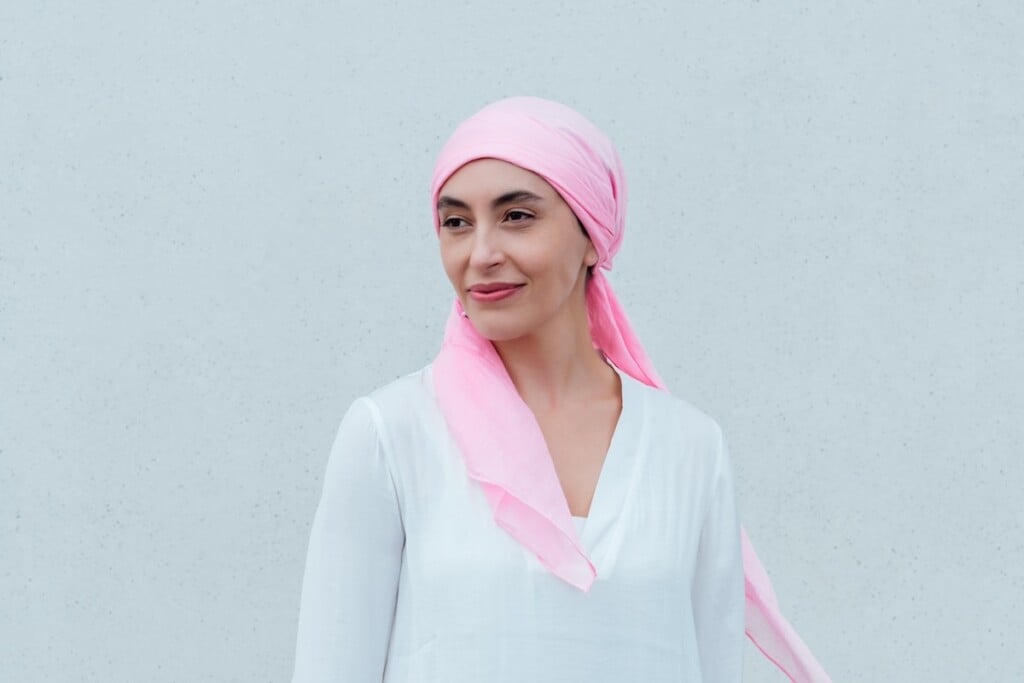After Breast Cancer
Medicine has scored remarkable gains in the battle against this scourge, but patients should understand the challenges treatment brings.

Here’s the good news: Breast cancer has never been more survivable. According to the American Cancer Society, when diagnosed in the “localized” stage (early, when the malignancy hasn’t left the breast tissue), it has a nearly 99 percent survival rate. According to data collected by the National Cancer Institute, breast-cancer mortality in the U.S. dropped 44 percent from 1989 to 2024.
Says Christy Morrissey, M.D., an oncologist at Valley Mount Sinai Comprehensive Cancer Care in Paramus who specializes in breast and gynecological cancers: “I think the main reason is screening mammogram technology. We can catch breast cancer much earlier than we have in the past. I see a lot of patients coming in with early, stage-one breast cancer or stage-zero breast cancer, when the cancer is present only in the milk duct and is not yet invasive. When it’s caught that early, the survival rate is significantly higher.”
Adds Deena Graham, M.D., an oncologist who specializes in breast and gynecological cancers at Hackensack University Medical Center: “In addition to better early detection and awareness, we have better, more tailored therapies and better supportive care. For example, we can do genomic testing on early-stage breast cancers and determine if patients would benefit from chemotherapy. We’re also using immunotherapy in addition to chemotherapy in the curative setting for triple-negative breast cancer [which tests negative for estrogen and progesterone receptors and the HER2 protein, and is considered more aggressive than other types of breast cancer]. All of it adds up.”
But that success begs the question: What should you expect after breast cancer treatment? What happens as you move through the remission and recovery stages?
EFFECTS OF ANTIHORMONE THERAPY
“The most common form of breast cancer is what we call ‘hormone-sensitive,’” explains Dr. Graham. This means that the cancer cells have receptors for hormones such as estrogen and progesterone, which cause them to grow and spread. “One of the main treatments for this is antihormone or antiestrogen therapies, which block those hormone receptors,” says the doctor. These treatments, taken orally, are often used in conjunction with surgery or as a preventive measure to help stop cancer from returning after treatment. They are usually taken for five to 10 years. “They cause menopausal symptoms,” says Dr. Graham. “Hot flashes, thinning of hair, vaginal dryness, stiffness, things like that. Particularly in younger women, they can affect quality of life.”
How to manage these effects? “It’s not exciting, but exercise and weight management help,” says Dr. Graham. Dr. Morrissey agrees, adding that “many of my patients are particularly worried about the joint pain. Many experience stiffness in small joints—hands, ankles, toes and fingers. I tell people they must move. If you sit still, it’s likely to get worse.” She also says that estrogen inhibitors can sometimes worsen osteoporosis. “If you have osteopenia or osteoporosis, exercise is even more important. Anything that puts weight on joints helps build new bone. In addition, we recommend vitamin D and calcium to promote bone growth.”
LONG-TERM EFFECTS OF CHEMOTHERAPY
Consisting of drugs that inhibit cell division and kill fast-growing cells, chemotherapy treatment has immediate side effects that are well known— including nausea, hair loss and fatigue. It also can have long-term effects. “There is risk of cardiac damage associated with some chemotherapy drugs, and very rarely with radiation therapy,” Dr. Graham says. “Since we can’t take away that risk, we try to focus on optimizing other risk factors, particularly because breast-cancer survivors are living so much longer now. Follow up with a primary care provider about blood pressure, cholesterol and diabetes. Optimize everything else and lower risk that way.”
“We get an echocardiogram [a specialized ultrasound] of your heart before we start treatment,” says Dr. Morrissey, “and then we get another one three months in. There are specialists with you every step of the way. We’ll know if something is going to be cardiotoxic and if it isn’t safe to proceed with that type of chemo.”
Another possible side effect is neuropathy, or nerve damage that can cause numbness and tingling, particularly in the fingers and toes. “In mild cases, it usually resolves within a year,” says Dr. Morrissey, “but for some it can be permanent. In that case, we sometimes recommend acupuncture.” “For about 5 percent of patients,” adds Dr. Graham, this nerve damage “can affect balance and sleep. There are some medications that we can use to help mitigate those side effects.” As for the “brain fog” associated with recovering from chemo, she says that “keeping people engaged in their regular lives has become important for this reason. The more patients can participate in normal activities, the better they tend to do mentally.”
THE IMPACTS OF SURGERY
The aftermath of breast-cancer surgery, no matter how big or small, often includes either pain or a loss of sensation at the incision site. “You might feel swelling, tenderness or nerve pain,” says Dr. Morrissey. “To manage that, massage the area as you would a knot in your shoulder. You need to break up that fibrous band or everything is going to get stiffer and tighter.” Women who opt for full reconstruction after a mastectomy often report that the new lack of sensation takes time to adjust to.
Also a risk after surgery is lymphedema, or a swelling (often in the arms) caused by damaged lymph nodes. Breast-cancer surgery that also removes lymph nodes under the arms increases the likelihood of this condition, as does radiation that targets the area. “We are really focusing on doing less surgery to those axillary areas, which lowers the risk,” Dr. Graham says. “If that surgery is necessary, then early detection of lymphedema is key. There are also new procedures, such as a lymph transfer, that can help with it.” Adds Dr. Morrissey: “If a patient develops it, we recommend occupational and physical therapy. Among other things, she’ll get fitted with a compression sleeve, and that compression will help with lymph drainage.”
THE MENTAL TOLL
“No matter how much someone wants to go back to ‘normal’ after breast cancer,” says Dr. Graham, “her life is probably never going to be identical to what it was before. That’s hard for people. Most patients I see are also caretakers themselves—mothers, sisters, daughters. I encourage them to give themselves a little bit of grace, because they need it. You have to take time to heal and take care of yourself.”
Adds Dr. Morrissey: “Once someone gets to ‘survivorship,’ meaning she’s cancer-free and done with treatment, a lot of women have a fear of recurrence. I tell them that they’ve done everything they can to stop the cancer from coming back, but it’s a hard thing to deal with. Going to survivorship and support groups and talking to other people are important. If you need to see a mental health professional, we can refer you to the right person.”
The doctor offers reassurance with a caution. “I tell my patients they’re going to be able to do everything they used to do, within limitations,” she says. “Don’t feel guilty if you can’t run 10 miles right now. It doesn’t mean you won’t get there in a few months or years.”

